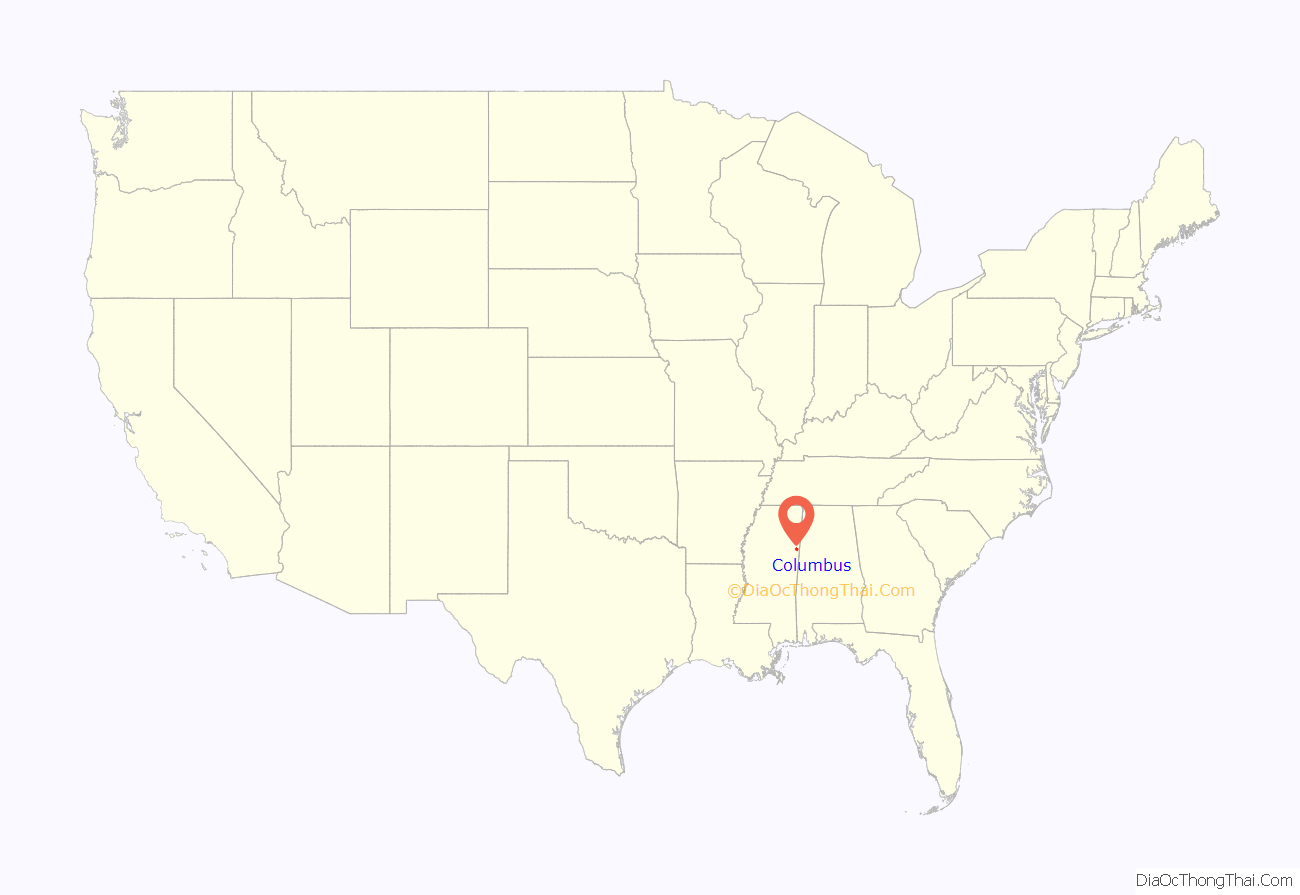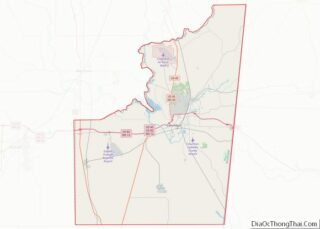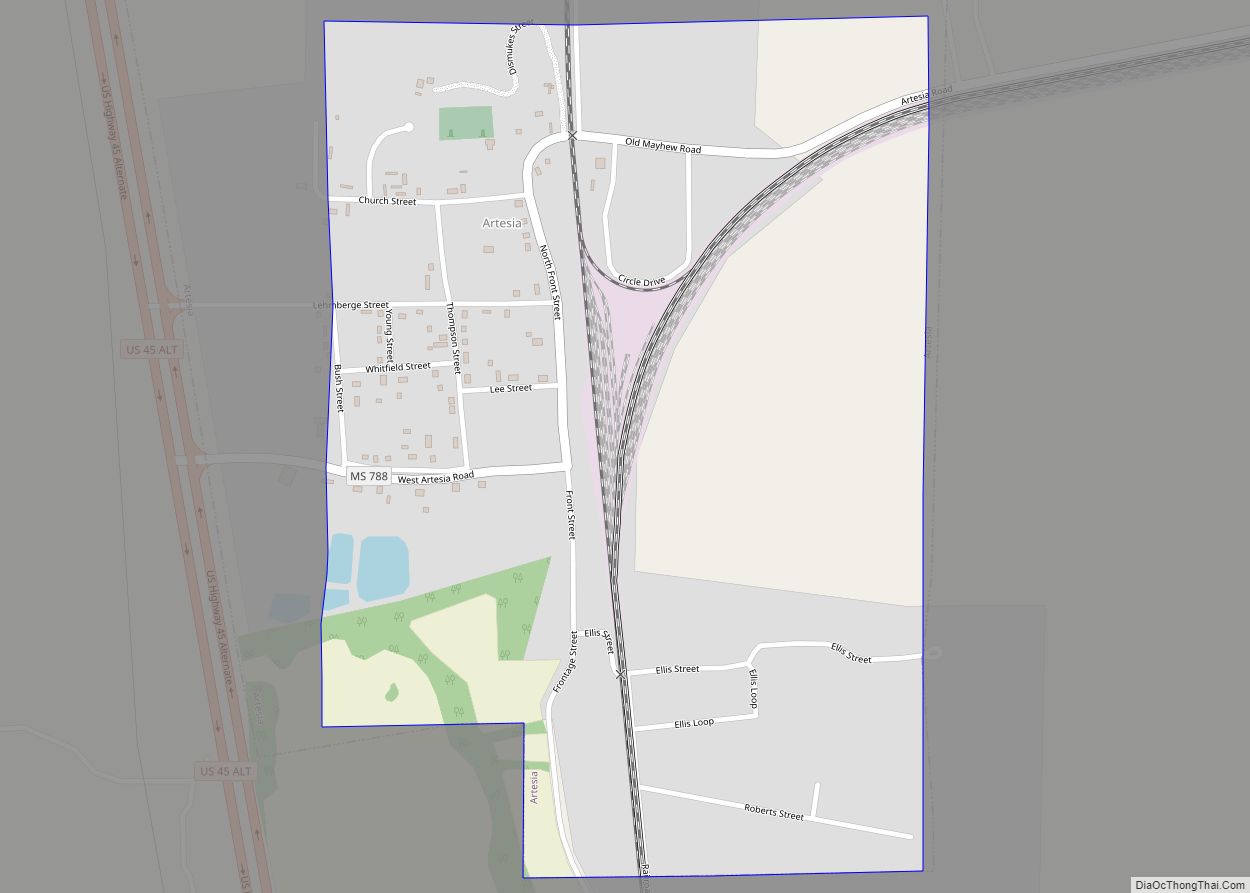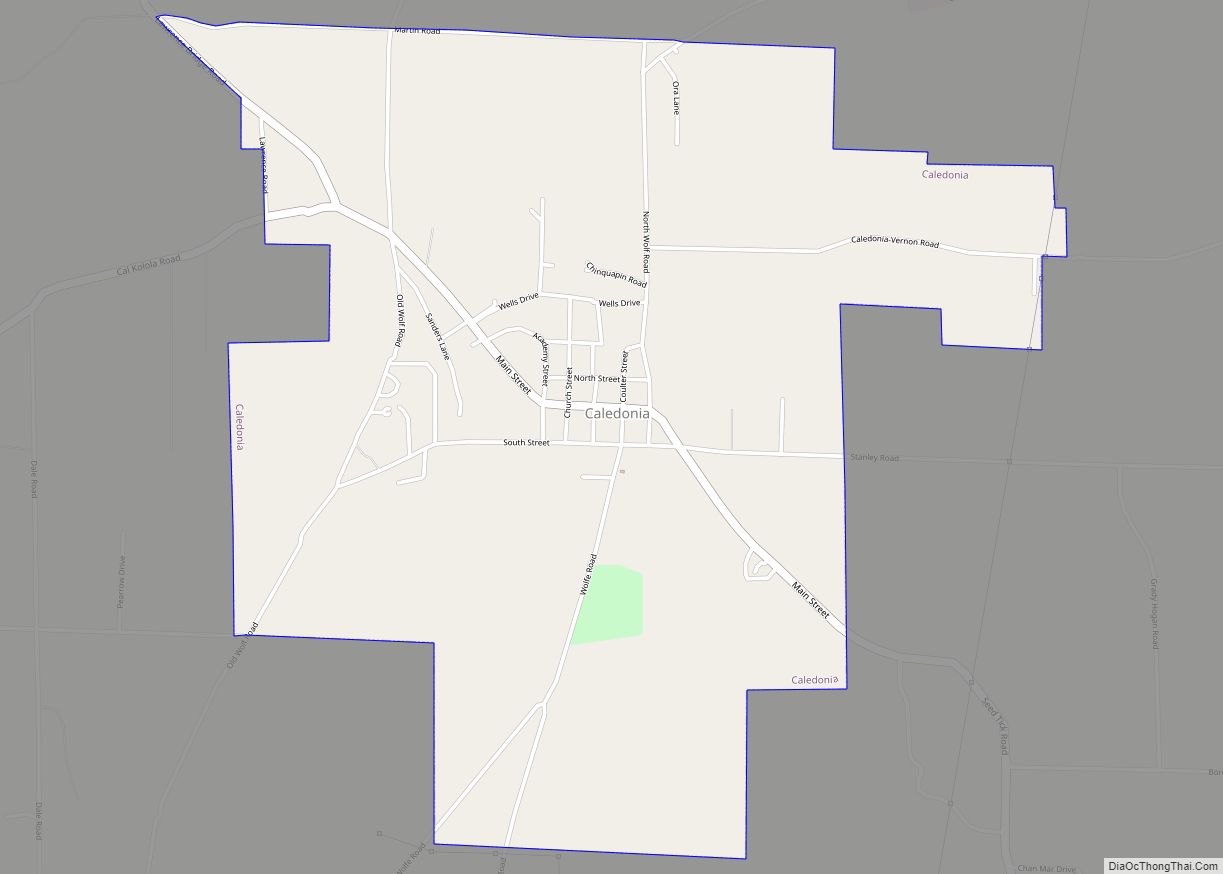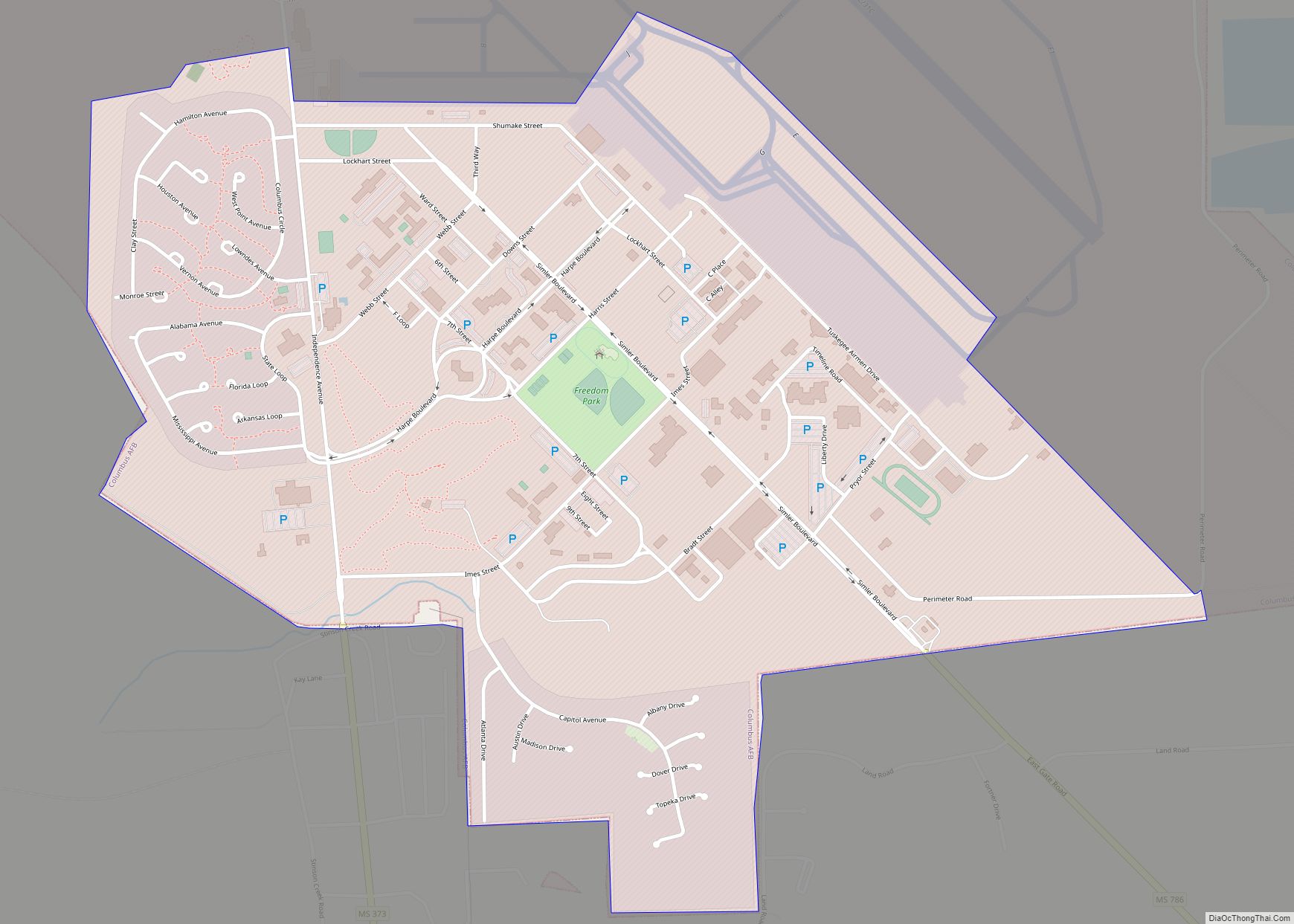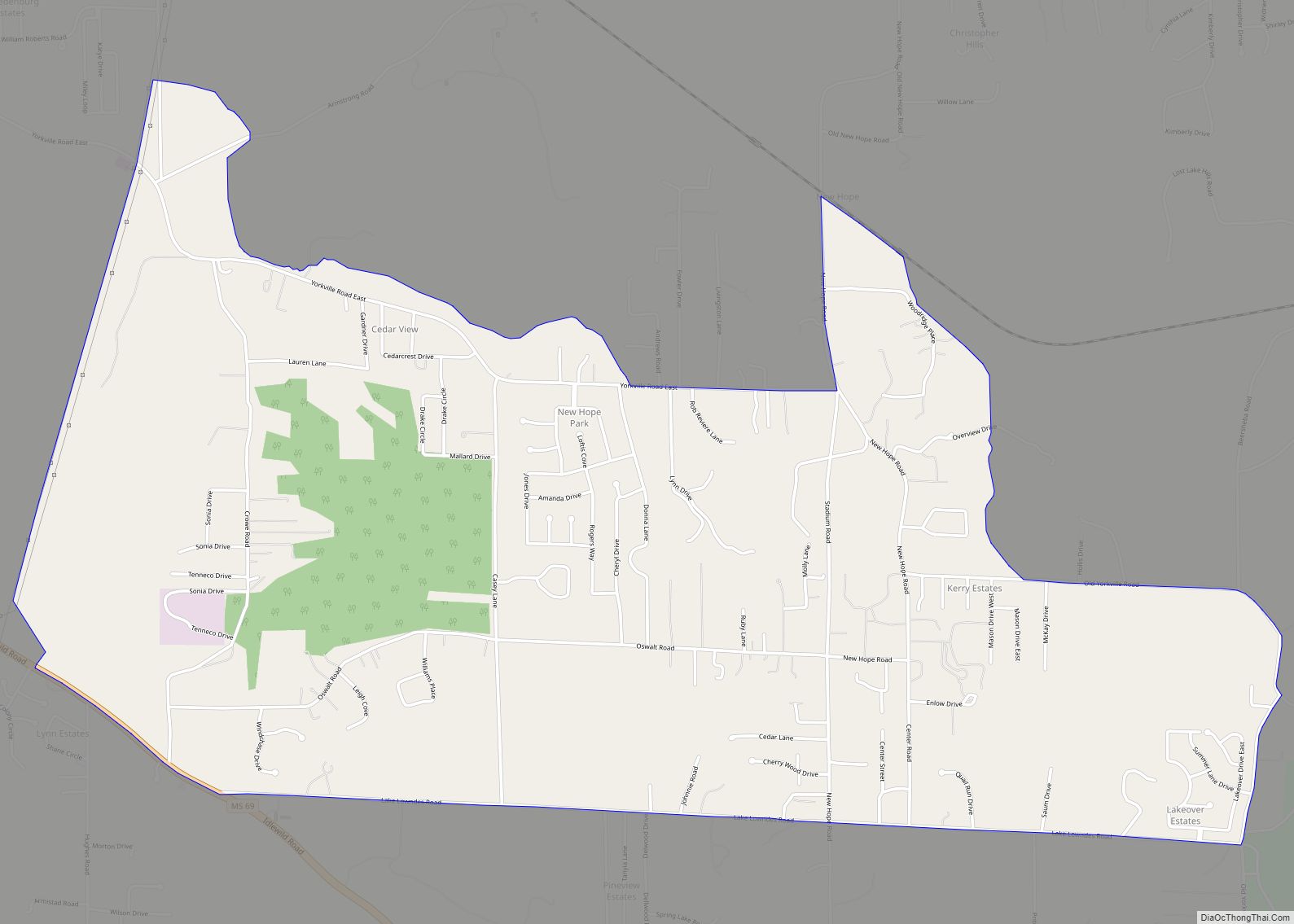Columbus is a city in and the county seat of Lowndes County, on the eastern border of Mississippi, United States, located primarily east, but also north and northeast of the Tombigbee River, which is also part of the Tennessee-Tombigbee Waterway. It is approximately 146 miles (235 km) northeast of Jackson, 92 miles (148 km) north of Meridian, 63 miles (101 km) south of Tupelo, 60 miles (97 km) northwest of Tuscaloosa, Alabama, and 120 miles (193 km) west of Birmingham, Alabama.
The population was 25,944 at the 2000 census and 23,640 in 2010. The population in 2019 was estimated to be 23,573. Columbus is the principal city of the Columbus Micropolitan Statistical Area, which is part of the larger Columbus-West Point Combined Statistical Area. Columbus is also part of the area of Mississippi called The Golden Triangle, consisting of Columbus, West Point and Starkville, in the counties of Lowndes, Clay and Oktibbeha.
| Name: | Columbus city |
|---|---|
| LSAD Code: | 25 |
| LSAD Description: | city (suffix) |
| State: | Mississippi |
| County: | Lowndes County |
| Founded: | 1821 |
| Elevation: | 217 ft (66 m) |
| Total Area: | 25.88 sq mi (67.02 km²) |
| Land Area: | 25.05 sq mi (64.88 km²) |
| Water Area: | 0.83 sq mi (2.14 km²) |
| Total Population: | 24,084 |
| Population Density: | 961.48/sq mi (371.23/km²) |
| ZIP code: | 39701-39705 |
| Area code: | 662 |
| FIPS code: | 2815380 |
| GNISfeature ID: | 0668721 |
Online Interactive Map
Click on ![]() to view map in "full screen" mode.
to view map in "full screen" mode.
Columbus location map. Where is Columbus city?
History
The first record of the site of Columbus in Western history is found in the annals of the explorer Hernando de Soto, who is reputed to have crossed the nearby Tombigbee River on his search for El Dorado. However, the site does not enter the main continuity of United States history until December 1810, when John Pitchlynn, the U.S. Indian agent and interpreter for the Choctaw Nation, moved to Plymouth Bluff, where he built a home, established a farm, and transacted Choctaw Agency business.
After the Battle of New Orleans, Andrew Jackson recognized the urgent need for roads to connect New Orleans to the rest of the country. In 1817 Jackson ordered a road be built to provide a direct route from Nashville to New Orleans. His surveyor, Captain Hugh Young, chose a place on the Tombigbee River where high ground approached the river on both sides as the location for a ferry to be used for crossing the river when high water prevented fording the river. A military bridge was constructed where the present-day Tombigbee Bridge was later developed in Columbus, Mississippi. Jackson’s Military Road opened the way for development in the area.
Founding
Columbus was founded in 1819, and, as it was believed to be in Alabama, it was first officially recognized by an Alabama Legislative act as the Town of Columbus on December 6, 1819. Before its incorporation, the town site was referred to informally as Possum Town, a name which was given by the local Native Americans, who were primarily Choctaw and Chickasaw. The name Possum Town remains the town’s nickname among locals. The town was settled where Jackson’s Military Road crossed the Tombigbee River 4 miles south of John Pitchlynn’s residence at Plymouth Bluff. In 1820 the post office that had been at Pitchlynn’s relocated in Columbus. Pitchlynn’s which had been settled in 1810 became the town of Plymouth in 1836 and is now the location of an environmental center for Mississippi University for Women. Silas McBee suggested the name Columbus; in return, a small local creek was named after him.
The city’s founders soon established a school known as Franklin Academy. It continues to operate and is known as Mississippi’s first public school. The territorial boundary of Mississippi and Alabama had to be corrected as, a year earlier, Franklin Academy was indicated as being in Alabama. In fact, during its early post-Mississippi-founding history, the city of Columbus was still referred to as Columbus, Alabama.
Civil War and aftermath
During the American Civil War, Columbus was a hospital town. Its arsenal manufactured gunpowder, handguns and a few cannons. Because of this, the Union ordered the invasion of Columbus, but was stopped by Confederate General Nathan Bedford Forrest. This is substantiated in the book The Battle of West Point: Confederate Triumph at Ellis Bridge by John McBride. Many of the casualties from the Battle of Shiloh were brought to Columbus. Thousands were eventually buried in the town’s Friendship Cemetery.
One of the hospitals was located at Annunciation Catholic Church, built in 1863 and still operating in the 21st century. The decision of a group of ladies to decorate the Union and Confederate graves with flowers together on April 25, 1866, is an early example of what became known as Memorial Day. A poet, Francis Miles Finch, read about it in the New York newspapers and commemorated the occasion with the poem “The Blue and the Grey”. Bellware and Gardiner noted this observance of the holiday in The Genesis of the Memorial Day Holiday in America (2014). They recognized the events in Columbus as the earliest manifestation of an annual spring holiday to decorate the grave of Southern soldiers. While the call was to celebrate on April 26, several newspapers reported that the day was the 25th, in error.
As a result of Forrest preventing the Union Army from reaching Columbus, its antebellum homes were spared from being burned or destroyed, making its collection second only to Natchez as the most extensive in Mississippi. These antebellum homes may be toured during the annual Pilgrimage, in which the Columbus residences open their homes to tourists from around the country.
When Union troops approached Jackson, the state capital was briefly moved to Columbus before moving to a more permanent home in Macon.
During the war, Columbus attorney Jacob H. Sharp served as a brigadier general in the Confederate Army. After the war, he owned the Columbus Independent newspaper. He was elected to two terms in the State House, serving four years representing the district in the Mississippi House of Representatives.
WPA mural
The mural Out of the Soil was completed in 1939 for the Columbus post office by WPA Section of Painting and Sculpture artist Bealah Betterworth. Murals were produced from 1934 to 1943 in the United States through “the Section” of the U.S. Treasury Department.
20th century
Columbus has hosted Columbus Air Force Base (CAFB) since World War II. CAFB was founded as a flight training school. After a stint in the 1950s and 1960s as a Strategic Air Command (SAC) base (earning Columbus a spot in Soviet Union target lists), CAFB returned to its original role. Today, it is one of only four basic Air Force flight training bases in the United States, and prized as the only one where regular flight conditions may be experienced. Despite this, CAFB has repeatedly hung in the balance during Base Realignment and Closure (BRAC) hearings.
Columbus boasted a number of industries during the mid-20th century, including the world’s largest toilet seat manufacturer, Sanderson Plumbing Products, and major mattress, furniture and textile plants. Most of these had closed by 2000. A series of new plants at the Golden Triangle Regional Airport, including the Severstal mill, the American Eurocopter factory, the Paccar engine plant and the Aurora Flight Sciences facility, are revitalizing the local economy.
Recent history
On June 12, 1990, a fireworks factory in Columbus exploded, detonating a blast felt as far as 30 miles away from Columbus. Two workers were killed in the blast.
On February 16, 2001, straightline winds measured at 74 miles per hour destroyed many homes and trees but resulted in no fatalities. The city was declared a federal disaster area the next day by President George W. Bush. On November 10, 2002, a tornado hit Columbus and caused more damage to the city, including the Mississippi University for Women.
In 2010, Columbus won a Great American Main Street Award from the National Trust for Historic Preservation.
In February 2019, Columbus took a direct hit from an EF-3 tornado that caused devastating damage to homes and businesses and killed one woman after a structure fell on her.
Columbus Road Map
Columbus city Satellite Map
Geography
The city is located approximately 10 mi (16 km) west of the Mississippi-Alabama state line along U.S. Route 82, U.S. Route 45, and numerous state highways. US 82 leads southeast 29 mi (47 km) to Reform, Alabama and west 25 mi (40 km) to Starkville. US 45 leads south 32 mi (51 km) to Macon and north 28 mi (45 km) to Aberdeen. According to the United States Census Bureau, the city has a total area of 22.3 square miles (58 square kilometers), of which 21.4 square miles (55 square kilometers) is land and 0.9 square miles (2.3 square kilometers) is water. Large lakes and rivers are nearby, such as the Buttahatchee River in northern Lowndes County that defines the border between Lowndes and Monroe counties; in the middle of the City of Columbus and Lowndes County lies the Luxapallila Creek, and the Tombigbee River with the John C. Stennis Lock and Dam impounding Columbus Lake. Columbus is a relatively flat place in the northern part of Lowndes County, as the land rises for a short period of time into hills and bluffs, in the southern/eastern part of the county, the land has rolling hills that quickly turn into flatland floodplains that dominate this county. This county lies in the Black Prairie Geographic Region, and the Northeastern Hills Region of the state/area. Prairies, forests and floodplain forests lie here. The soil quality is poor in the eastern part of the county, otherwise the soil is relatively fertile. Columbus and the surrounding areas are listed as an Arbor Day Hardiness Zone 8a (10 to 15 °F or −12.2 to −9.4 °C); note that temperatures in 2010 reached 11 °F (−12 °C), but the USDA Hardiness Zones list the area as zone 7b (5 to 10 °F or −15.0 to −12.2 °C).
Climate
See also
Map of Mississippi State and its subdivision:- Adams
- Alcorn
- Amite
- Attala
- Benton
- Bolivar
- Calhoun
- Carroll
- Chickasaw
- Choctaw
- Claiborne
- Clarke
- Clay
- Coahoma
- Copiah
- Covington
- Desoto
- Forrest
- Franklin
- George
- Greene
- Grenada
- Hancock
- Harrison
- Hinds
- Holmes
- Humphreys
- Issaquena
- Itawamba
- Jackson
- Jasper
- Jefferson
- Jefferson Davis
- Jones
- Kemper
- Lafayette
- Lamar
- Lauderdale
- Lawrence
- Leake
- Lee
- Leflore
- Lincoln
- Lowndes
- Madison
- Marion
- Marshall
- Monroe
- Montgomery
- Neshoba
- Newton
- Noxubee
- Oktibbeha
- Panola
- Pearl River
- Perry
- Pike
- Pontotoc
- Prentiss
- Quitman
- Rankin
- Scott
- Sharkey
- Simpson
- Smith
- Stone
- Sunflower
- Tallahatchie
- Tate
- Tippah
- Tishomingo
- Tunica
- Union
- Walthall
- Warren
- Washington
- Wayne
- Webster
- Wilkinson
- Winston
- Yalobusha
- Yazoo
- Alabama
- Alaska
- Arizona
- Arkansas
- California
- Colorado
- Connecticut
- Delaware
- District of Columbia
- Florida
- Georgia
- Hawaii
- Idaho
- Illinois
- Indiana
- Iowa
- Kansas
- Kentucky
- Louisiana
- Maine
- Maryland
- Massachusetts
- Michigan
- Minnesota
- Mississippi
- Missouri
- Montana
- Nebraska
- Nevada
- New Hampshire
- New Jersey
- New Mexico
- New York
- North Carolina
- North Dakota
- Ohio
- Oklahoma
- Oregon
- Pennsylvania
- Rhode Island
- South Carolina
- South Dakota
- Tennessee
- Texas
- Utah
- Vermont
- Virginia
- Washington
- West Virginia
- Wisconsin
- Wyoming
